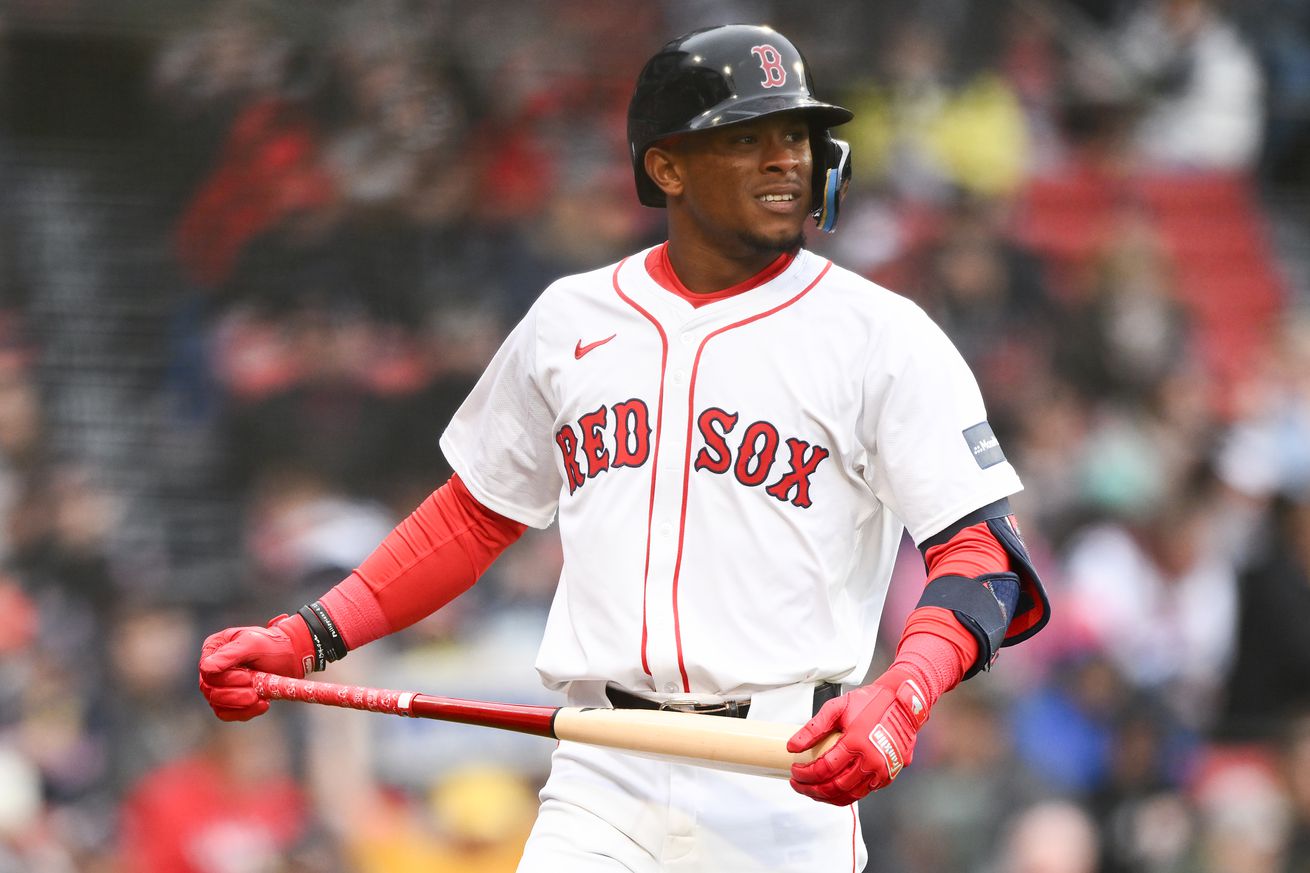
It’s a valid question.
You probably read that headline and immediately thought, “No.” The stats tend to agree with you. Through 30 games this season, Red Sox centerfielder Ceddanne Rafaela is slashing .233/.295/.349, good for a wRC+ of 80. 80 is 20% below the league average bat; not the best mark. Rafaela is known for his defense, and as a nine-hole hitter, he doesn’t exactly need to light the world on fire offensively; just average would do the trick. It might be too soon to draw conclusions, but there are some early signs that Rafaela is improving at the plate.
If you’ve followed Rafaela at all, you know the major knock on him is plate discipline. Over his first two seasons, he struck out just over 27% of the time, near the bottom of the league among qualified hitters. It doesn’t take a genius to deduce that a high strikeout rate and league-average power aren’t characteristics of a productive offensive player.
It’s still early, but Rafaela’s approach at the plate appears to be improving. Through nearly 100 plate appearances, his strikeout rate is sitting at 16.8%, while his walk rate is 6.3%, both improvements over his 2024 campaign. Strikeout and walk rates tend to stabilize fairly quickly, so while he may not finish the season with those marks, it’s unlikely they’re just statistical noise.
Statcast breaks the plate into four different zones: Heart, Shadow, Chase, and Waste. I want to focus on Rafaela’s performance against pitches in the latter two zones. Here’s an example of a pitch in each of the two zones so you have an idea of what these pitches look like in practice, starting with chase.
And now waste:
As you can see, these aren’t good pitches to hit. If you still don’t believe me, the league batting average against pitches in the chase and waste zones was .097 in 2024. The slugging percentage was .121.
Roughly one-third of the pitches Rafaela saw last season were in these two zones. Swinging at these pitches is almost always a bad thing. Even if you do connect, it’s likely poor contact based on the type of swing needed to make contact. In 2024, he swung at 38% of pitches in the chase and waste zones. To add context, that’s a little over 12% of all the pitches he saw. So far this season, he’s been much better at laying off these pitches, cutting his swing rate against them by 10%. That alone raises his offensive floor by eliminating several of those swings that produce almost exclusively negative outcomes.
Not swinging is only half of the equation, though. The pitches you do swing at are equally as important. Hitting pitches thrown in the “heart” zone is the best way to do that. Last season, Rafaela did well against these hittable offerings, slugging .536, slightly below the league-wide mark. Still, he whiffed at a fairly high rate against these pitches, particularly against fastballs. This year, however, he’s cut that whiff rate against four-seamers from 32% to 18%.
The results this season don’t fully back up these improvements, but it’s early. If Rafaela continues to lay off waste pitches and connect on pitches left over the plate, he should see improved stats across the board. His power may be impacted by pulling the ball less frequently (likely as a result of trying to make more contact), but more balls in play, along with continued success against mistake pitches, should pay dividends in time.
And if it doesn’t, he’ll still do awesome stuff like this.